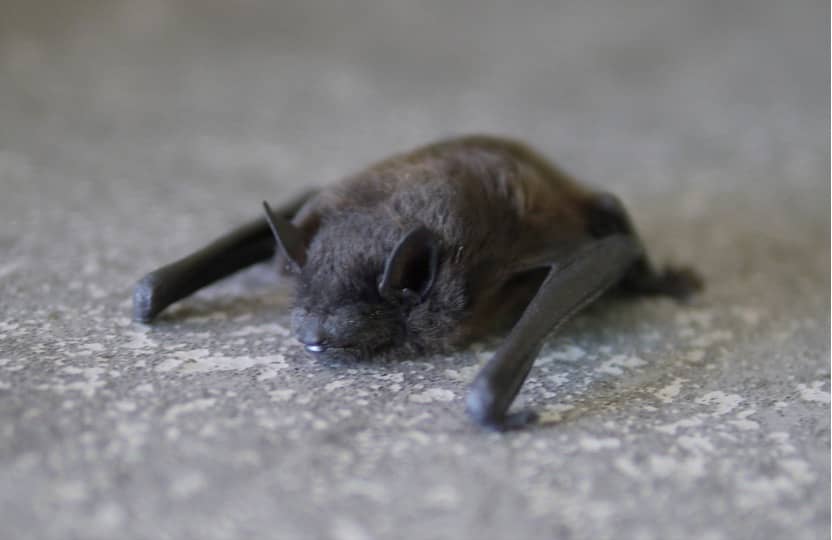New Hampshire is blessed with an abundance of native wild animals that add life and vibrancy to the ecosystem. But as human settlements have continually encroached into wild habitats over the past few decades, there has been a rise in human/wildlife conflict.
Several of these animal species are acclimatized to human settlements. Many have even adapted to rely on humans for food and shelter – even in urban centers. That’s why you might find coyotes walking along the road, or a deer right in your compound, or a raccoon within your attic. If you’re dealing with a wildlife infestation problem, then you must involve a professional to resolve the problem humanely. You can learn more about professional wildlife removal at wildliferemovalnewhampshire.com.
In their quest for food and shelter, many of these animals leave destruction in their path. In this post, we explore some of the most common urban animals in New Hampshire and the damage they cause.
- Bat
Bats are famed for being the only mammals capable of flight. New Hampshire is home to eight species of bats, including Eastern red bat, Silver-haired bat, northern long-eared bat, tricolored bat, hoary bat, little brown bat, eastern small-footed bat, and big brown bat.

In the wild, several bat species reside in colonies in mines, trees, tunnels, and caves. However, they also find the dark and high space in the attic or chimney palatable. Although bats do not chew on wood, wires, and other objects, they leave behind large amounts of droppings (called guano).
Their dropping is highly corrosive and it can damage metal surfaces. What’s more, bat guano exposes humans to the risk of histoplasmosis. This is an infection caused by breathing in spores of fungus found in bat droppings.
There are several bat removal strategies, but exclusion is the most preferred.
- Black bear
Black bears are ubiquitous across North America. Although they mostly eat plants, they also eat small mammals, carrion, and garbage. Do not be deceived by their size (a male can weigh over 500 pounds), bears are quick, agile, and excellent climbers. Thankfully, they generally tend to stay away from people.
However, as nocturnal animals, they may scavenge for food in trash cans, or seeds from bird feeders or pet food left outside. As intelligent animals, they can also search buildings and vehicles for food. The problem is they damage vehicles and buildings during this process.
- Beaver
Beaver is usually dark brown. It has a tail that looks like a paddle and it weighs about 30 – 60 pounds. Beaver are keystone species because their dam-building activities create habitat for many fish, wildlife, and plant species.
However, beavers take down trees to build their dams, resulting in the loss of landscaping plants. What’s more, their activities also pose a flooding hazard to nearby houses. We urge you to learn all about pest beavers at beaver-removal.com.
- Raccoons
Raccoons are most noted for the black mask they have around their eyes. These pests are highly intelligent and dexterous. Raccoons aren’t picky eaters and will feed on almost anything called food.
Raccoons have learned that attics, crawlspaces, and chimneys provide the perfect place for them to build their nest and even raise their young. Hence, they actively try to break into those places.
In the attic, they will tear off the insulation, chew wires and wood. They also leave behind their droppings and urine which is a breeding ground for several diseases. Raccoons will also eat crops from the garden, open the trash can to get food.
- Skunks
Skunks are cat-sized mammals most recognizable by the long strip they have across their back. This may be a single thick stripe across the back and tail, two thinner stripes, or a series of white spots.

Skunks are notorious for burrowing out their dens. They also burrow to search for grubs and worms. Unfortunately, burrowing disfigures the landscape of your yard and lawn. Also, their burrowing activity can cause weakness in porches, sheds, decks, and the foundation.
As a defense mechanism, skunks spray out sulfur-based compounds from their anus when they feel threatened. This noxious scent can be long-lasting and overpowering. That’s why care needs to be taken when handling skunks.
- Opossum
Opossums are fascinating creatures. First off, they are the only native marsupials found in the whole of North America. They are nocturnal and solitary animals. And although they mainly eat plants, they have also been known to eat insects and bird’s eggs.
Compared to their size, opossums produce a lot of waste. Their urine can stain the ceiling and attic, and their feces are breeding grounds for bacteria. They are also messy and will bring food indoors and leave it to rot.
Wrap Up
We only explored six of the most common urban animals in New Hampshire. Here are some other animals that are worthy of mention:
- Mole
- Canada goose
- Chipmunk
- Coyote
- Fox
- Porcupine
- Snake
- Tree squirrel
- Woodchuck
- White-tailed deer
- Woodpecker
Advertise with the mоѕt vіѕіtеd nеwѕ ѕіtе іn Antigua!
We offer fully customizable and flexible digital marketing packages.
Contact us at [email protected]
















